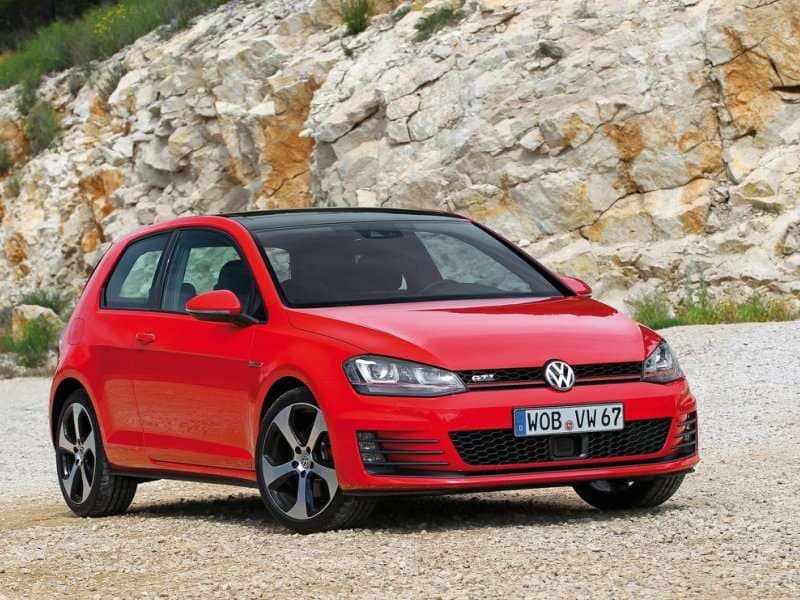Recent Articles
Popular Makes
Body Types
Volkswagen GTI Retrospective
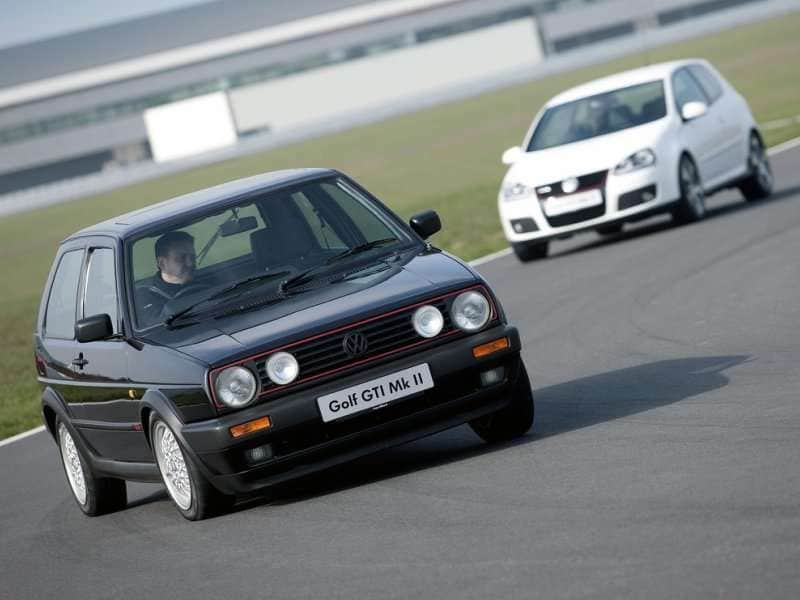
There was a time when the ideal strategy for the production of a performance car was to take a company’s largest engine and place it in the brand’s smallest and lightest body. This highly successful approach fostered some of the most revered automobiles of all time. However, Volkswagen proved this is far from the only route to an exciting car.
In 1974, Volkswagen replaced the Beetle with the Volkswagen Golf (initially known as the Rabbit in the U.S.).
This car was, in many ways, the exact opposite of its predecessor.
Where the Beetle used a rear-mounted air-cooled engine and rear-wheel drive; the Golf used a front-mounted liquid-cooled engine and front-wheel drive. The Beetle had a cargo hatch in the front, while the Golf’s cargo hatch was in the rear. Further, where the Beetle’s styling was dominated by curves, the Golf’s styling was crisply angular. While the two cars couldn’t have been more different, the public accepted the Golf wholeheartedly.
The following year, Volkswagen launched a performance version of the Golf. Emphasizing agility over outright power, the Volkswagen Golf GTI proved good fuel economy and driving fun could indeed be had in the same package. With the imminent arrival of the 2015 Mk7 Golf GTI, we thought it good to look back at the evolution of one of the most famous enthusiast cars of all time.
Volkswagen GTI Retrospective: Mk1 Golf GTI (aka Rabbit GTI) (1983 – 1984)
Though that first GTI only ran one model year in the U.S. before a newer model replaced it, that year was enough to make a huge impression. So much so, some 30,000 copies of the car were built at VW’s Westmoreland, Penn. factory between 1983 and 1984. Said to deliver the verve of BMW’s highly regarded 2002 model at a bargain price ($7,990), the GTI’s 90 horsepower 1.8-liter fuel-injected four-cylinder engine produced 100 ft-lbs of torque and was tasked with moving a mere 2,011 pounds. A close ratio five-speed manual gearbox added tremendously to the fun of racing the hot little hatchback around town. An instant fixture on best of the best lists everywhere, the Volkswagen Golf (nee Rabbit) GTI was both fun to drive and delivered strong fuel economy. With a zero to 60 of 9.7 seconds, a top speed of 106 miles per hour and the potential for 26 mpg in the city and 36 on the highway, the GTI was an outstanding answer to a question nobody had asked before. The car was offered for one year only in the United States because although it had been around since 1975, Volkswagen didn’t get around to sending the car here to the States until 1983; just one model year before the changeover to the Mk2 Golf platform.
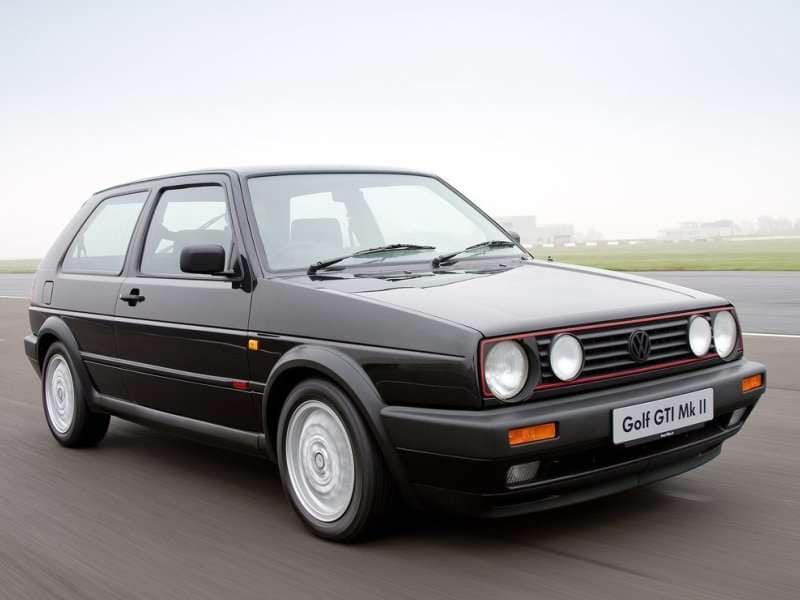
Volkswagen GTI Retrospective: Mk2 GTI (1985 – 1992)
For the 1985 model year, Volkswagen introduced a reworked version of the Golf platform, and with it came a new GTI. The 1985 GTI’s 1.8-liter inline four cylinder engine offered 100 horsepower and 105 ft-lbs of torque. The power increase was the result of a switch to a digital electronic ignition system working in concert with Bosch’s KE Jetronic fuel injection. This was a switch from the Mk1 GTI’s K Jetronic injection system. The Mk2 engine also got larger diameter intake valves and high compression pistons. These changes permitted an increase in the compression ratio from 8.5:1 to 10:1. The five-speed manual transmission from the Mk1 GTI, still deemed adequate, was employed in the Mk2 GTI as well.
Styling changes differentiating the car from the standard Golf models included larger, more streamlined headlamps; red accent trim; black bumpers, fender flares and body side moldings; a rear window spoiler, and 14-inch alloy wheels. This was also the first GTI model to get a trip computer. Base price increased to $8,990.
As good as the 1985 car was, the real hero car of the second generation GTI came the following year. As its nomenclature suggests, the GTI 16V’s engine employed twin overhead cams actuating four valves per cylinder. This gave the GTI much better breathing ability at the high end of the rev range. This, plus a slight displacement increase to 2.0-liters resulted in a bump in output to 134 horsepower. Torque swelled as well—to 133 ft-lbs. It was a good thing too, as the GTI also gained weight. Curb weight was up more than 400 pounds over the Mk1 GTI, to 2,445. Equipment increased too though, mesh BBS wheels, and Recaro seats became GTI staples with this car. Zero to 60 was quoted at 7.8 seconds, top speed was 125, and fuel economy was 21 miles per gallon in the city and 28 on the highway. Volkswagen built some 66,223 copies of the Mk2 GTI between 1985 and 1992.
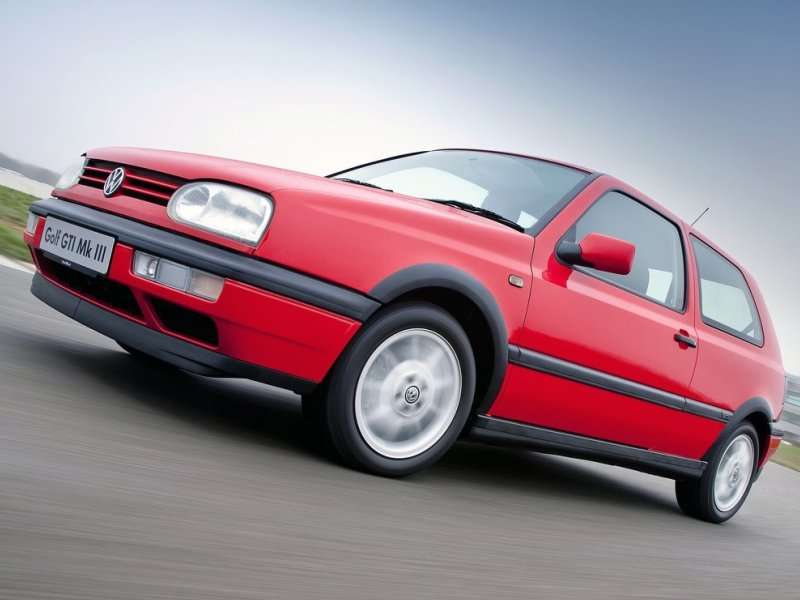
Volkswagen GTI Retrospective: Mk3 GTI (1994 – 1999)
By all accounts, the “standard” Mk3 GTI was a bit of a letdown when it was introduced in 1994—particularly coming on the heels of the Mk2 GTI 16V. Power came from a 2.0-liter inline four like the GTI 16V had, but the 16 valve head was jettisoned. When viewed compared to the standard Mk2 GTI, the 115 horsepower 2.0-liter Mk3 did represent something of an improvement in terms of output, but curb weight was up considerably when compared to the previous car, so performance did not improve.
This new porkiness was the result of the product planning department’s decision to make the GTI more comprehensively equipped. Standard features included a premium audio system with eight speakers, air conditioning, a power operated sunroof, power door locks, and an alarm system. And while those were nice items to have, on the performance front, the Mk3 GTI used the same engine and suspension system as the base Golf, with the only difference being a 20-millimeter anti-roll bar added to the rear suspension to tighten up the handling.
Those looking for more go to accompany the show did well to wait until the 1995 model year when Volkswagen dropped a six-cylinder engine into the GTI’s engine bay for the first time. Using Volkswagen’s narrow angle V6 cylinder configuration the 2.8-liter 1995 Volkswagen GTI VR6 boasted 172 horsepower and 173 ft-lbs of torque, making it the most powerful GTI ever (up to that point). The GTI VR6 would run from zero to 60 in 7.2 seconds, making it the quickest GTI ever too (also up to that point).
One of the most coveted performance cars of its day, the GTI VR6 was nicely equipped. Power windows, heated power adjustable exterior mirrors, sport seats, traction control, and 15-inch wheels were fitted, in addition to the gear found on the standard GTI. The model also got a more aggressively tuned suspension system. Because of these differences, the GTI VR6 did weigh more than its sibling (2,811 pounds vs. 2,557) but the power increase was more than sufficient to make up the difference.
By the 1990’s Volkswagen’s models were considerably more expensive. The 1994 GTI commanded a base price of $16,000, while the 1995 GTI VR6 came in at $19,685.
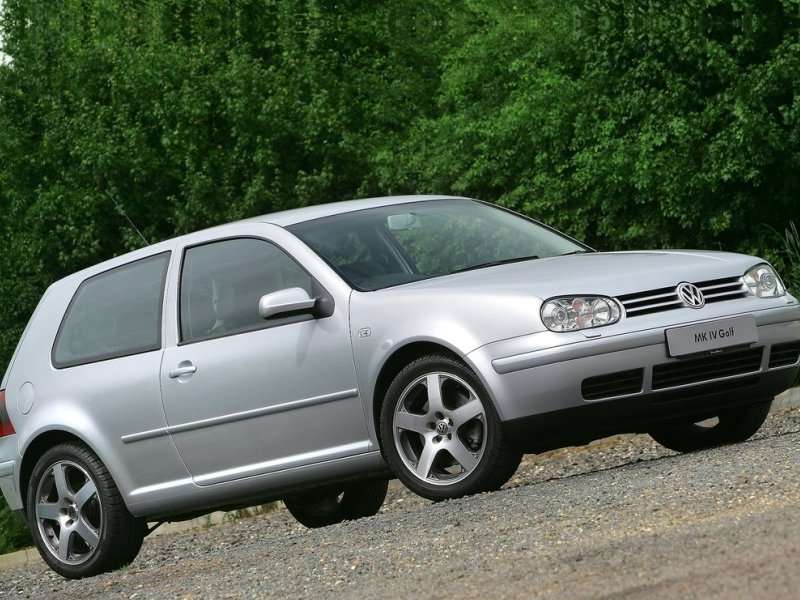
Volkswagen GTI Retrospective: Mk4 GTI (1998 – 2004)
The Mk4 GTI continued along the Mk3’s path of adding more content, without significant increases in performance potential. The base model was powered by the 115-horsepwer 2.0-liter inline four. On the other hand, the interior accommodations of the car were readily comparable to those of considerably more expensive cars. The real highlights of this generation of the GTI came in the form of the switch to a 1.8-liter, 180 horsepower turbocharged engine for base models, and a power increase to 200 horsepower for the VR6.
However, the real brilliance of the Mk4 GTI came in the form of the limited edition 2002 Volkswagen GTI 337. Adopting the code name of the GTI from the 1970’s, the GTI 337 Edition added a six-speed gearbox, an aero kit, 18-inch wheels, metal pedals, Recaro sport seats, and a three-spoke leather-wrapped steering wheel with red stitching. Essentially the 25th Anniversary commemorative edition of the Golf, the GTI 337 foreshadowed the appearance of an even more potent GTI model.
Its crowing glory a 237-horsepower version of the VR6 engine, the 2002 Volkswagen GTI R32 also enjoyed 236 ft-lbs of torque routed to all four wheels thanks to Volkswagen’s 4Motion all-wheel drive system. A six-speed manual transmission completed the powertrain. The all-wheel drive system relied primarily on the front wheels, transferring thrust to the rear wheels only when the front wheels threatened to lose traction.
Further, the R32’s upgraded suspension and brakes endowed the car with outstanding handling and dynamic capabilities, while that sweet-winding VR6 was out front making deliciously enticing sounds. While the weight gain imposed by the added equipment and the all-wheel drive hardware meant the R32 didn’t accelerate much faster than the standard GTI, the confidence its powertrain inspired made it much faster on winding roads—where sports cars really matter most. With that said, the 2002 Volkswagen R32 was easily the most satisfying driver’s car ever to wear the GTI badge at that point in the car’s history.
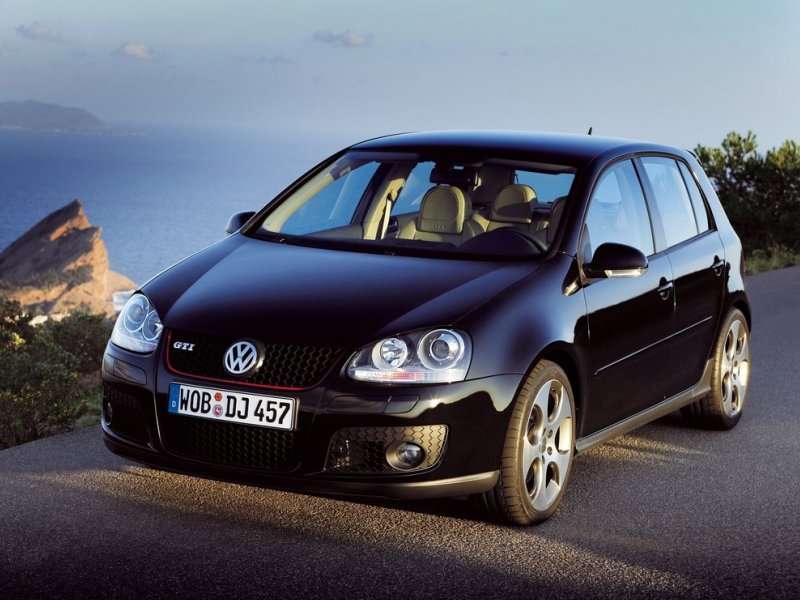
Volkswagen GTI Retrospective: Mk5 GTI (2006 – 2009)
If any iteration of the GTI signaled the maturation of the model it was the Mk5 GTI sold in the U.S. between 2006 and 2009. The first GTI to offer a choice of four doors or two, this GTI was also the first to be offered in the U.S. with the direct shift gearbox introduced as a Europe-only option for the first generation R32.
Heralded by many reviewers as a return to form for the GTI, despite the increased weight and broader palette of standard features, the car also offered 200 horsepower and 207 ft-lbs of torque. A 2.0-liter 16-valve turbocharged inline four-cylinder engine generated the power. In addition to the six-speed sequential manual direct shift gearbox, a traditional six-speed manual transmission was offered as well. Top speed was 130 miles per hour, and the run from zero to 60 could be accomplished in 6.7 seconds. Automobile magazine named it the 2007 Automobile of The Year, Car and Driver called it one of its 10 best cars for 2007, 2008, and 2009.
The R32 made an encore appearance during this generation as well, this time getting 250 horsepower from the 3.2-liter VR6. The six-speed manual transmission was eschewed in favor of the direct-shift gearbox, and the interior accommodations made it the most luxurious Golf ever offered. Price and curb weight were quite high though. MSRP was $35,000, while the curb weight came in at 3,600 pounds.
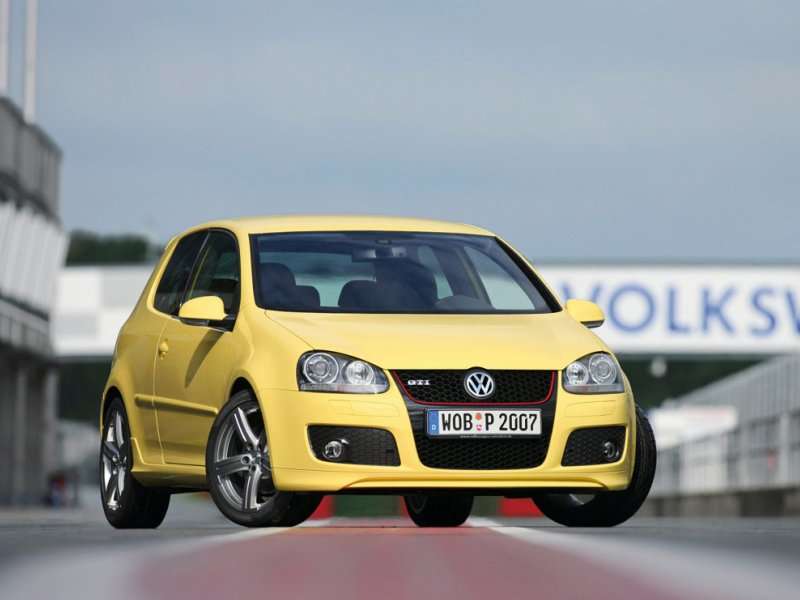
Volkswagen GTI Retrospective: Mk6 GTI (2010 – 2014)
While the look of the car changed, the mechanicals remained largely the same for the Mk6 GTI, with the 200-horsepower turbo four once again seeing duty. Which, by all accounts, was quite adequate. Reviewers said of the 2010 Volkswagen GTI, its real advantage against the competition came in the refined nature of the car.
Where its Japanese competitors were ever boastful of their horsepower, the GTI wooed with its smoothness, its well-planted demeanor at speed, and its sumptuous amenities. Plush leather upholstery, soft-touch plastics on the dash and doors, and the sophisticated appearance of its layout made the GTI stand apart from the pretenders to its throne. Features like Bi-Xenon headlights and a touchscreen monitor for its comfort and convenience interface made the Mk6 GTI as luxurious as it was fun to drive.
Rather than using its displacement in the nomenclature designation as it had done before, Volkswagen called the hotter version of the Mk6 GTI Golf R. There is speculation this was because R20 didn’t sound as potent as R32. The 2010 Golf R ran a 256-horsepower version of the turbocharged 2.0-liter four, which made 243 ft-lbs of torque for the version of the car we got here in the States. After taking a fair amount of flack for only offering a direct-shift gearbox with the Mk5 R32, VW’s product team brought the six-speed manual back for the Mk6 R car, and left the DSG in Europe.
